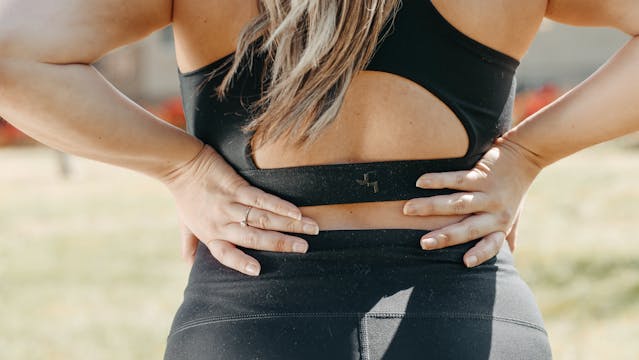What to do against muscle pain? These are the do's and don'ts

Muscle soreness is something that almost everyone experiences, whether you’re a seasoned athlete or just starting out. It can occur after an intense workout, a new sporting activity, or even after a day of unusual physical exertion. While muscle soreness is a sign that your muscles have been working hard, the discomfort can seriously hinder your daily activities. Fortunately, there are several strategies to relieve muscle soreness and speed up recovery, so you can get back to full strength in no time. In this blog, we’ll discuss what you can do to prevent muscle soreness and reduce the symptoms.
What exactly is muscle pain?
Muscle pain is a pain in the muscles that is caused by a build-up of lactic acid and other waste products in your body. This causes a painful feeling in the muscles, cramps and stiffness. In principle, there are three types of muscle pain:
- Muscle pain that you feel after exercising as a result of acidification in your muscles.
- Muscle pain caused by a bruise or tear.
- Delayed onset muscle soreness or DOMS
In case of acute muscle pain, you can continue training, but adjust your workout accordingly and do not continue training in the acidification for too long to prevent injuries and muscle tears. If your muscle pain is the result of a tear or bruise, it is advisable to leave your training schedule as it is for a while. Rest is then necessary for a successful recovery.
Causes of muscle pain
Muscle pain does not have just one cause, although too much exercise is often the main cause. However, there are also other causes of muscle pain besides exercise:
- Stress
- Deficiency of certain nutrients, such as vitamin D
- Lack of moisture
- Flu
- Some medications
- Lack of sleep
- Overload
- Injuries

What to do about muscle pain after exercise?
Preventing muscle pain is not always possible. Especially when you adjust your training schedule, your muscles will have to get used to the new load. You can prevent muscle pain somewhat with good stretching exercises beforehand. In short, ensure a good warm-up and cool down, because this is also important to prevent injuries.
Stretching exercises that help
Below are some stretching exercises that can help you warm up and cool down specific muscles to prevent too much lactic acid from building up in those muscles:
- Improves blood circulation against muscle pain in legs and calves.
- Stretch your thighs to help relieve muscle pain in your legs and calves.
- Stretching the calves against muscle pain in calves and legs.
- Stretching the hips for muscle pain in the legs and calves.
- Lower back stretch to help relieve back muscle pain.
- Stretch your neck and abdomen to prevent back muscle pain.
- Shoulder stretches to help relieve muscle pain in your shoulders and arms.
- Triceps stretching for sore arms and shoulders.
What to do to reduce muscle pain?
Muscle pain is at its worst 48 hours after a workout, but can still last for a few days. Want to get back to exercising faster or get rid of your ailments? Follow these tips to help you to reduce muscle pain:
- Take a cold or warm shower.
- Let your sore muscles be massaged.
- Make sure you stay adequately hydrated during your workout.
- Make sure you get enough sleep so that the inflammation levels in your blood do not increase.
- Keep moving, because sitting still causes stiffness and even more pain. Only move other muscle groups, so that your sore muscles are spared somewhat.
- Take antioxidant nutritional supplements, such as extra minerals or vitamins.
- Apply homeopathic remedies such as Arnica to your muscles, Revvi Fast Recovery Gel, Perskindol or Voltaren.
- Eat enough protein.
- Drink cherry juice packed with anti-inflammatory compounds.
- Wear compression clothing to prevent fluid from building up in your muscles.

What to do about muscle pain due to medical causes?
Muscle pain is most common after heavy training, but can also be caused by the flu or when using certain medications. If you have any doubts about your muscle pain or if the symptoms do not go away after a week, it is advisable to contact your GP.
What to do about severe muscle pain due to a bruise or tear?
What can be done against severe muscle pain as a result of bruising or tearing the muscles? When you suffer from muscle pain as a result of a bruise or tear, it is best to apply the RICE method to prevent swelling, pain and bleeding. This abbreviation stands for rest, ice, compression and elevation. Rest is necessary for the muscles to recover. Ice can be used to relieve pain and swelling. Compression clothing can also be used to prevent swelling. Keeping your limbs elevated is ideal for preventing inflammation.



Leave a comment
All comments are moderated before publishing.